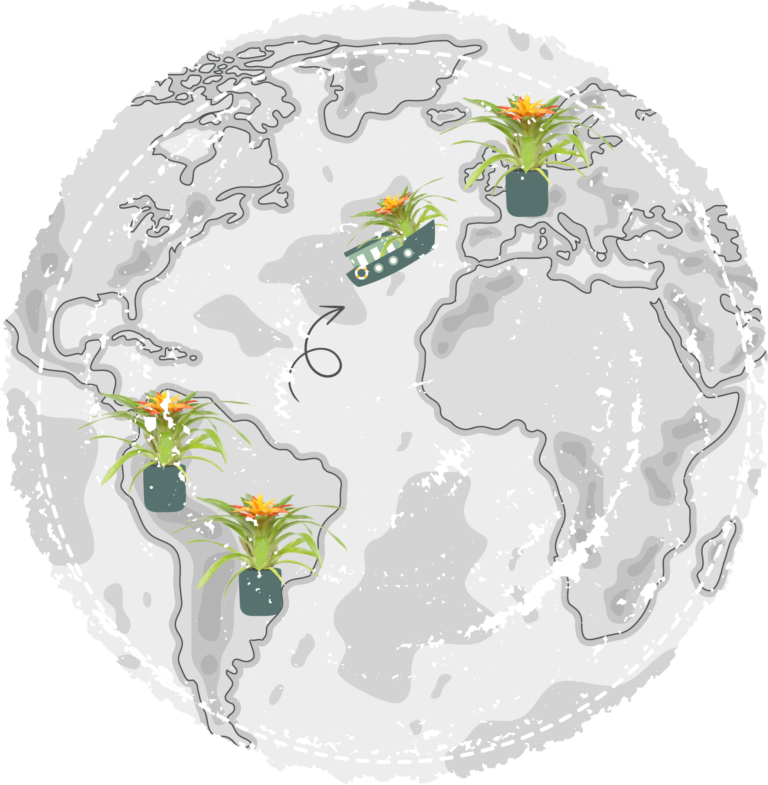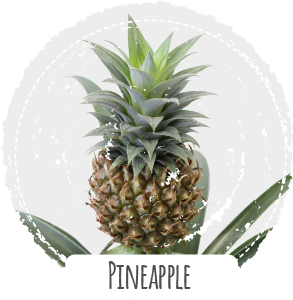Bromeliad
Bromeliads have travelled the world for a long time now. Before that, their ancestors grew high in the rugged mountains of the Cordilleras de los Andes and deep in the tropical jungles of Uruguay. During the eighteenth century, Belgian traders visiting these countries discovered the beauty of Bromeliads and took a few plants back to Europe with them. This was the starting point for all the many, many varieties of Bromeliads from which we can choose today.

Growth process
Bromeliads are propagated in two ways, by seed or in the laboratory. In both cases, it produces a small plant after about a year, which is cultivated on specialized propagation companies.
When the plant is about 5cm tall, they come to our young plant nursery, we plant them in a paper pot and let the plants grow for a few more months. Regular sorting enables us to always supply uniform batches to our other nurseries. The plant, often already 20-25 cm tall, is then placed in the final pot and goes into the nursery to continue growing. After a few months, robots pick up the plants, we pass them under a camera and they are placed in the containers again by 3 different robots per size.
After having been in the greenhouse for a while, the plants are given a flowering treatment, after which the plant with flower can be sold 10 to 16 weeks later. They are then sorted for the 7th time in the workspace by height and width using a camera, after which we deliver uniform batches. The Bromeliad has been growing for almost three years now!
Growth process
Easy Care
Bromeliads are strong and easy to maintain and give flowering pleasure for an average of 3-6 months. Place the Bromeliad in the light (not in full sun) and water in the calyx of the plant once a week.
From mid-May, your Bromeliads can be moved from the room to the balcony and terrace. They are tropical plants so not lovers of frost. During the first weeks it is advisable to cover them at night. Also outside: not in full sun.








